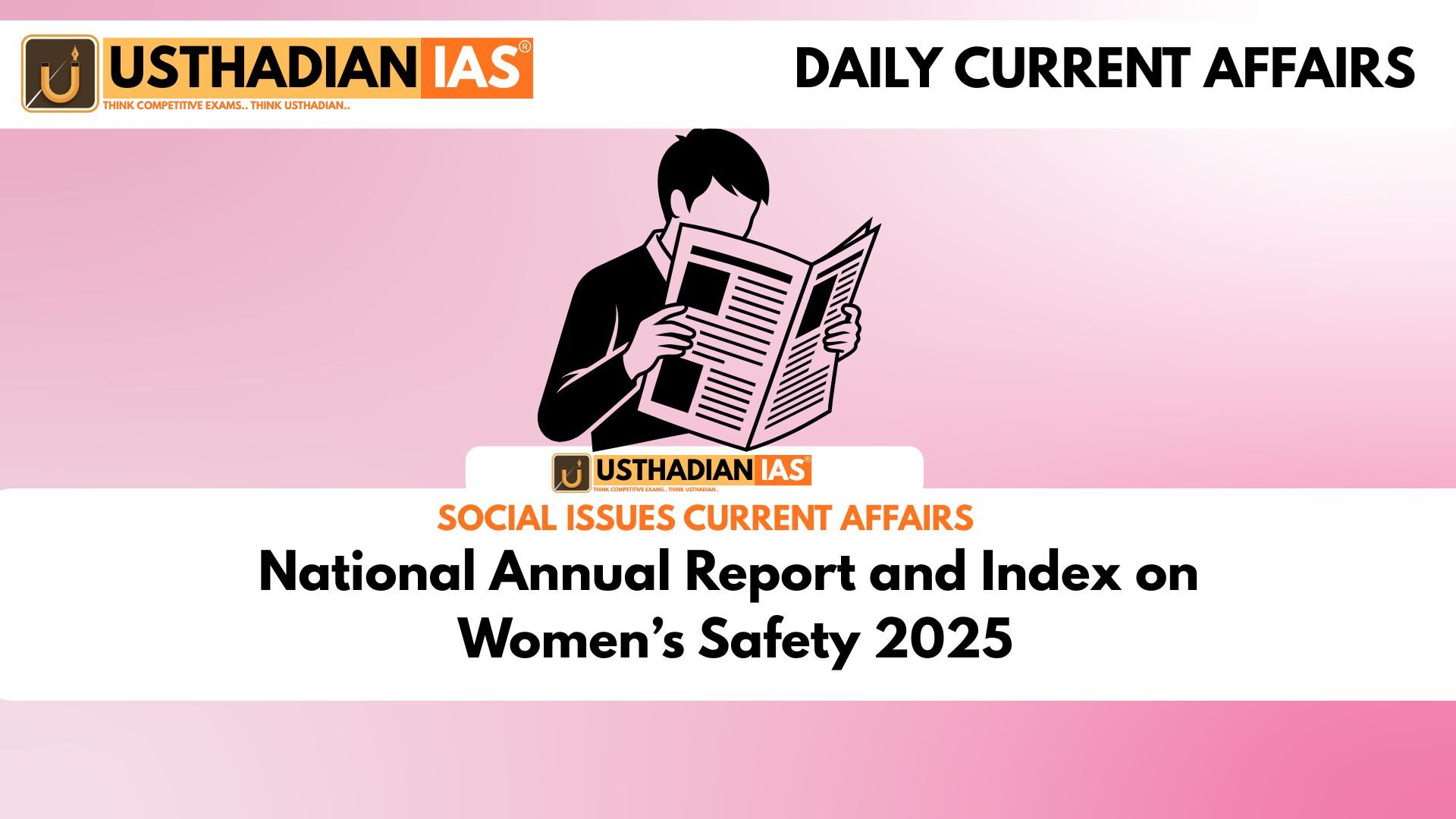National Safety Score
National Annual Report and Index on Women’s Safety 2025: The National Annual Report and Index on Women’s Safety (NARI) 2025 provides a detailed analysis of urban women’s safety across India. Based on a survey of 12,770 women in 31 cities, the national safety score stands at 65%. Despite progress, 40% of women continue to feel unsafe in their cities. Static GK fact: The first Crime in India report was published by the National Crime Records Bureau (NCRB) in 1953.
City Rankings
The index highlights clear disparities across cities. Kohima, Visakhapatnam, and Bhubaneswar rank the highest due to better policing, gender equity, and infrastructure. At the other end, Patna, Jaipur, and Delhi perform poorly, reflecting weak institutional systems and entrenched patriarchal practices. These variations show how governance and cultural factors shape safety outcomes.
Harassment Patterns
In 2024, 7% of women reported harassment, but the figure rises to 14% among women under 24. Young women, particularly students and professionals, are more vulnerable in recreational and educational spaces. Verbal harassment is most common, accounting for 58% of incidents, followed by physical, psychological, economic, and sexual harassment.
Harassment Hotspots
The survey identifies neighbourhoods (38%) and public transport (29%) as primary harassment zones. Safety levels decline sharply after dark, with poor lighting and unreliable transport increasing risks. While 86% feel safe in educational institutions during the day, confidence drops significantly at night or off-campus. Static GK Tip: The Delhi Metro became India’s first urban rail network to introduce dedicated women’s coaches in 2010.
Workplace Safety
A positive trend is visible in professional spaces where 91% of women describe workplaces as safe. However, awareness of the Prevention of Sexual Harassment (POSH) policy remains low, with 53% unaware of its presence in their organisations. Among those who know, most consider it effective, proving that awareness is as vital as legal safeguards.
Redressal Mechanisms
Trust in formal complaint systems remains weak. Only one in three victims reports harassment, and of these, just 22% complaints are registered. Even fewer, 16%, result in concrete action. A striking 75% of women doubt the effectiveness of police and legal mechanisms, highlighting a cycle of silence that discourages reporting.
Broader Dimensions
The report underlines that women’s safety must be seen as a developmental issue, not just law and order. Beyond physical safety, psychological, digital, and financial security are equally important. Ensuring safety requires reforms in urban planning, institutional accountability, and social behaviour. Static GK fact: India ratified the Convention on the Elimination of All Forms of Discrimination Against Women (CEDAW) in 1993.
Static Usthadian Current Affairs Table
National Annual Report and Index on Women’s Safety 2025:
| Topic | Detail |
| National safety score 2025 | 65% |
| Survey coverage | 12,770 women from 31 cities |
| Percentage of women feeling unsafe | 40% |
| Top ranked cities | Kohima, Visakhapatnam, Bhubaneswar |
| Lowest ranked cities | Patna, Jaipur, Delhi |
| Harassment reported (overall) | 7% |
| Harassment among women under 24 | 14% |
| Verbal harassment cases | 58% |
| Workplace safety perception | 91% consider safe |
| POSH policy awareness gap | 53% unaware |
| Complaint registration rate | 22% |
| Complaints leading to action | 16% |
| Women doubting redressal mechanisms | 75% |
| Key harassment hotspots | Neighbourhoods 38%, Public transport 29% |
| Day safety in institutions | 86% feel safe |
| Broader safety concerns | Psychological, financial, digital security |








